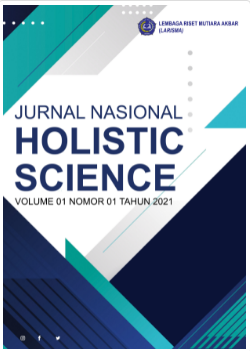Fueling the Fire of Nationalism: The Indramanyu People's Resistance Against Japanese Rule and Its Influence on the Indonesian Independence Movement
Main Article Content
Abstract
The struggle of the Indramayu people against Japan occurred in the context of the social, economic and political oppression experienced under Japanese rule. Japanese policies such as forced labor, economic exploitation, and political and cultural control sparked popular anger and resistance. The resistance of the Indramayu people to Japanese rule was a reflection of the strong national spirit in achieving Indonesian independence. This research uses a qualitative approach with a focus on literature study analysis. Through literature studies, research reveals how Japanese policies during their occupation of Indonesia, including economic exploitation, political and cultural control, and military cruelty, caused extraordinary suffering for the Indonesian people. The forced rice handover policy was the main trigger for the resistance of the Indramayu people. In this period, people were required to hand over very high quotas of rice, which caused a heavy economic and social burden for them. The resistance of the people of Indramayu, especially in Cidempet Village, is clear evidence of the people's courage and unity in facing oppression. Despite facing great risks, including repressive measures from the Japanese government, the people of Indramayu remain steadfast in fighting for their rights. This resistance not only had a local impact, but also gave impetus to the independence movement throughout Indonesia. The impact of the resistance of the Indramayu people on the Indonesian independence movement was very significant. Apart from increasing national awareness and strengthening local power, this resistance also encouraged the expansion of the independence movement to other regions and inspired a spirit of struggle throughout Indonesia. The resistance of the people of Indramayu shows the important role of regions in the independence movement, and emphasizes that the spirit of unity, courage and sacrifice is a strong foundation in achieving independence.
Article Details

This work is licensed under a Creative Commons Attribution-ShareAlike 4.0 International License.
References
Angraini, G, & Artono. (2016). Politik Padi pada Masa Pendudukan Jepang di Indramayu Tahun 1942-1944. Jurnal Avatara, 4(3).
Armelia, F. (2019). Pendudukan Jepang di Indonesia. Jawa Tengah: Alprin.
Fadli, M. R. (2021). Memahami desain metode penelitian kualitatif. Humanika, 21(1).
Gischa, S. (2022, August 13). Perlawanan Rakyat Indonesia Terhadap Jepang. Diakses dari: https://www.kompas. com/skola/read/2022/08/13/180000369/perlawanan-rakyat-indonesia-terhadap-jepang-?page=all
Iryana, W. (2016). Protes Sosial Petani Indramayu pada Masa Pendudukan Jepang (1942-1945). Jurnal Patanjala, 8(3).
Ishak, M. (2012). Sistem Penjajahan Jepang di Indonesia. Jurnal Inovasi, 9(1).
Ningsih, W. L. (2023, January 7). Keterkaitan Perang Dunia II dengan Masuknya Jepang ke Indonesia. Diakses dari: https://www. kompas. com/stori/read/2023/01/07/180000479/keterkaitan-perang-dunia-ii-dengan-masuknya-jepang-ke-indonesia?page=all
Pertiwi, E. D, Syah, I., & Arif, S. (2018). Perlawanan Petani di Indramayu terhadap Jepang Tahun 1944. Jurnal Pendidikan dan Penelitian Sejarah (PESAGI), 6(2).
Savitri, D. (2023, March 17). Dampak Positif dan Negatif Kebijakan Jepang Selama Menjajah Indonesia. Diakses dari: https://www. detik. com/edu/detikpedia/d-6624303/dampak-positif-dan-negatif-kebijakan-jepang-selama-menjajah-indonesia

